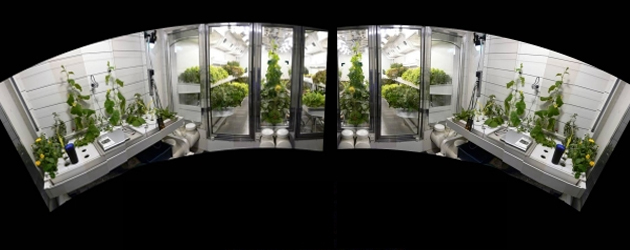- 10 Ways to Extend Your Season with Protected Cultivation
- QuickHoops Gothic High Tunnel Bender | Construction Manual for Modular Moveable Gothic High Tunnel (PDF)
- QuickHoops Gothic High Tunnel Bender | Construction Manual for Stationary Gothic High Tunnel (PDF)
- QuickHoops High Tunnel Bender | Construction Manual for Building a Stationary High Tunnel (PDF)
- QuickHoops Low Tunnel Benders | Instruction Manual (#9377 & #9520) | (PDF)
- Agribon+ AG-19, 30, 50 & 70 Row Cover | Insert (PDF)
- Hitch Mount for QuickHoops Low Tunnel Benders | Instruction Manual (PDF)
- Bobcat Automatic Ventilation Kit Manual (#6791) | Tech Sheet (PDF)
- Bobcat Pro High Tunnel Kit Manual (#6794) | Tech Sheet (PDF)
- Bobcat Pro High Tunnel Kit (#6794) | Parts List (PDF)
- Bobcat Sliding Door Kit Manual (#6792) | Tech Sheet (PDF)
- Bobcat Standard High Tunnel Kit Manual (#6795) | Tech Sheet (PDF)
- Bobcat Standard High Tunnel Kit (#6795) | Parts List (PDF)
- Bobcat Steel End Wall Kit Manual (#6793) | Tech Sheet (PDF)
- Truss Support Kit Manual (#6790) | Tech Sheet (PDF)
- Bobcat Tunnel Kits | Comparison Chart
- Beginning & Intermediate Controlled Environment Agriculture (CEA) | Advances in Greenhouse Crop Production
- 5 Cool Flowers to Plant Now | Lisa Mason Ziegler's Secrets for Growing Hardy, Cool-Season Annuals
- Hoop Loops | Installation Instructions | Tech Sheet (PDF)
- Introduction to Overwintering Flowers | Guide to Overwintering Flowers
- Overwintering Perennial Herbs
- Protect Your Crops | High & Low Tunnel Basics
- The Effect of Shorter Daylength on Winter Production
- Be First & Last to Market by Extending Your Growing Season
- Quick Hoops Low Tunnels | Set-up & Management with Eliot Coleman
- Constructing the Modular Moveable Gothic Tunnel – Animated Schematic
- Moving the Modular Moveable Gothic Tunnel – Slideshow
- Skinning the Modular Moveable Gothic High Tunnel – Slideshow
- Overwinter Flower Trials | Multiyear Results for 30+ Crops | Johnny's Selected Seeds | XLSX
- Seeding Date Calculator | Johnny's Recommended Flowers for Overwintering | XLSX
- Overwintering Onions from Seed | Johnny's Selected Seeds
- Winter Growing Guide | Part 5: Overwintering Planting Dates
- Pest & Disease Control Basics in Greenhouse, Hydroponic & Other Protected-Culture Systems
- Pests & Diseases of Greenhouses & Hydroponic Systems | Tech Sheet (PDF)
- Why & What to Grow in a Greenhouse? Basics of Protected Culture
- Recommended Varieties from Our Greenhouse Trials | What We Look for in Greenhouse Crops
- QuickHoops 3'W x 4.5'H Low Tunnel Bender (#7616) | Instruction Manual (PDF)
- Cable Purlin Trellis for QuickHoops High Tunnels | Installation Manual (PDF)
- QuickHoops Moveable High Tunnel Bender | Instruction Manual (PDF)
- QuickHoops Seedling & Microgreens Bench | Construction Guide (PDF)
- Row Cover & Insect Netting Options & Uses | Comparison Chart (PDF)
- Tufflite IV Greenhouse Film | Comparison Chart (PDF)
- Univent Automatic Opener for BiFold Doors | Instruction Manual (PDF)
- Video: Johnny's Season Extension & Overwintering Trials
- Video: Planning & Planting the Autumn Vegetable Garden | Tips & Recommendations with Niki Jabbour
- Video: Growing Under Cover with Niki Jabbour | Johnny's Webinar Series
- Video: Veggie Remix: Bring New Flavors & Colors Into Your Garden | Johnny's Webinar Series
- Video: Cover Cropping for Field & Garden with Collin Thompson | Johnny's Webinar Series
- Video: DIY Cold Frame • Easy How-to Tutorial with Niki Jabbour
- Video: Tips & Crop Recommendations for the Autumn and Winter Cold Frame • Tutorial with Niki Jabbour
- Video: How to Use Quick Hoops™ Benders to Create High & Low Tunnels
- Video: The Benefits of Row Covers | Recommendations & Tips
- Video: Hoop Houses & Other Ways to Extend Your Growing Season
- Video: Take a Tour with Us of Johnny's Greenhouses!
- Growing Under Cover with Niki Jabbour & Johnny's | Johnny's Educational Webinar Resources
- Johnny's Winter Growing Guide | Printable Brochure (PDF)
- Winter Growing Guide | Part 2: Production in the High Tunnel
- Winter Growing Guide | Part 1 - Introduction
- Winter Growing Guide | Part 3: Overwintering in Low Tunnels
- Winter Growing Guide | Part 6: Recommended Crops & Varieties
- Winter Growing Guide | Part 4: Planting Dates for a Winter Harvest
- When to Start Seeds for Overwintered Flowers | Guide to Overwintering Flowers
- Choosing Flower Crops to Overwinter | Guide to Overwintering Flowers
- Video: Winter Sowing & Milk-Jug Greenhouses | With Niki Jabbour & Johnny's
- Video: Irrigation Considerations for the Overwinter Flowers Tunnel | Johnny's Selected Seeds
- Webinar Slide Deck | Overwintering Flowers | 41-pp PDF
- Gardening in a Cold Frame With Niki Jabbour
Key Considerations for Beginning & Intermediate Growers
Founder, University of Arizona Controlled Environment Agriculture Center (UA-CEAC)
Today, advanced technologies have dramatically increased vegetable, fruit, and flower yields, with a whole new array of varieties available to the greenhouse industry. Growing greenhouse crops is one of the most exacting and intensive forms of all agriculture enterprises. Hydroponics / soilless growing systems, in combination with greenhouses, require high technology, and can be capital intensive and highly productive. For success, a grower must have a clear understanding and knowledge of horticulture, plant physiology, growing media, plant pathology and entomology, as well as computer and labor relations skills and the engineering capability to provide an environment best suited for plant growth. This knowledge base, plus management skills in greenhouse vegetable production, is a must.
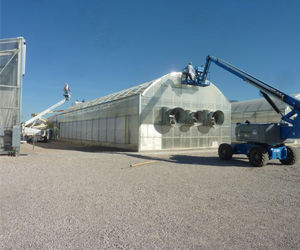
Aspiring new growers must seek the correct greenhouse design that will provide and maintain a growing environment that will result in maximum crop yields and quality.
While there is no one best greenhouse, the structural design must provide protection from wind, rain, heat, cold, insects, and diseases. The structural members and covering must permit maximum light transmission to the crop. This, along with excellent temperature control, is central to high-quality products.
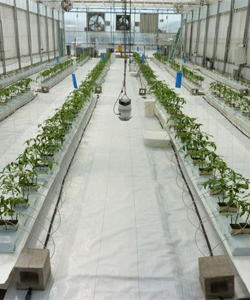
Controlled environment agriculture (CEA)
While growing in soil has been the standard for generations, major challenges with soilborne diseases and the lack of control over mineral nutrition and fruit quality require major changes moving forward.
Hydroponic/soilless technology, in combination with greenhouse structures (better termed controlled environment agriculture) have been developed to provide precise control over air and root temperatures, irrigation, plant nutrition, humidity, carbon dioxide, and even light. Newly available growing media, such as coco coir, are rapidly becoming popular. Today, such growing systems provide little root volume to reduce costs and maximize control over mineral nutrition, root aeration, diseases, and fruit flavor.
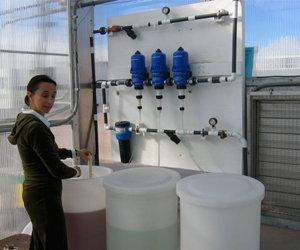
A technological revolution occurred with the advent of drip irrigation, which offers the only means of applying uniform water and fertilizer to the plant. Such systems have assured maximum yields while conserving fertilizer nutrients, and controlling costs associated not only with fertilizer but also water, labor, and machinery costs.
Fertilizer formulas, while quite similar, will differ according to the crop grown. Today, a whole new and exciting future in mineral nutrition is evolving for growing organic vegetables using systems of growing that are providing remarkable success.
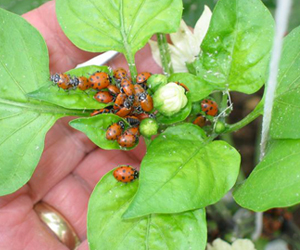
Today, pests and pathogens are best managed through an approach that is termed integrated pest management (IPM). In general, IPM is a multilayered approach involving the use of biological controls, plant genetics, and cultural practices, as well as chemical inputs, where necessary. Pesticides are avoided if at all possible because they are expensive and will reduce the potential for maximum yields.
A thorough knowledge of all diseases and insects, along with their control, is extremely important if one is to succeed.

A good building site is crucial for the proper function and operation of a greenhouse.
A constant supply of good water is imperative, and it must have good drainage of surface water and subsurface drainage. The location should additionally be free of high winds. If natural light is to be the primary source, the availability of good light is critical, and unless you have an overabundance of natural light, the site should also be unshaded by trees and mountains.
One must also have access to good labor and all-weather roads to markets, as well as availability of dependable and economically efficient energy, such as electricity and fuel for heating and mechanical cooling if needed.
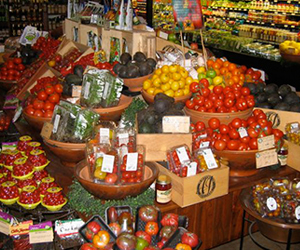
Greenhouse crops are high in value and perishable, and must have a market quality advantage over imported products coming from long distances, whether it be nationally or internationally.
One must be able to produce high-quality products under a label that indicates the products are Locally Produced. Provenance, together with freshness, visual appeal, aroma, and flavor, constitute an irresistible combination in the marketplace.
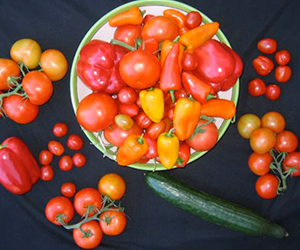
It is extremely important to select a reputable seed dealer that provides a wide selection of greenhouse vegetable varieties of the highest quality — a company that works with seed companies and plant breeders worldwide in the selection of the most suitable varieties for greenhouse vegetable production.
Growers producing fruit and flowers under protected culture must apply the same precaution in sourcing seed and plant material.
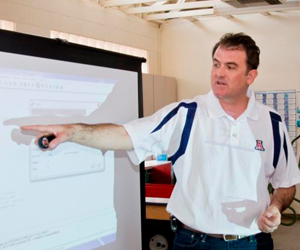
It is important not only for new growers to gain firsthand knowledge on the new technologies of controlled environment agriculture, but for existing growers also to gain up-to-date information on developments that are rapidly changing in today's industry. Companies and growers that don't pay attention to these new developments will have technology pass them by, decreasing their competitive edge.
As communities throughout the world are growing, their access to fresh, affordable, safe food becomes increasingly critical and so, too, does the role of the direct-market grower in association with protected environment agriculture. We encourage continuing education, networking, and hands-on workshops to keep abreast of rapidly advancing developments in this exciting field.
Growing Systems
Irrigation & Mineral Nutrition
Biological Controls
New Growers: Location
Market
Vegetable Kind & Variety
Workshops/Continuing Education
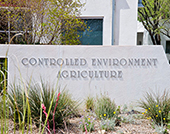
To learn more, visit the University of Arizona's Controlled Environment Agriculture Center (CEAC). The CEAC hosts a series of short courses consisting of lectures and hands-on workshops that cover the many aspects of controlled environment agriculture (CEA).
Their Greenhouse Crop Production & Engineering Design Short Courses provide a firm knowledge base for beginning and intermediate growers. Participants of the Short Courses are presented the most current and innovative strategies used in developing and maintaining successful CEA greenhouse systems.
As past attendee and Senior Johnny's Trial Tech Andrew Mefferd states:
There is no other school like the University of Arizona, with the combination of research and educational programs in greenhouse growing. In particular, their programs that are open to growers and the public offer a unique opportunity to share their extensive knowledge in the field of controlled environment agriculture.Learn More about UA-CEAC…
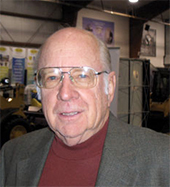
Merle Jensen, PhD
Dr. Merle Jensen has served as an academician and consultant to industry for over 40 years, developing agricultural systems for businesses, communities, and aerospace application. He was one of the early pioneers in the development of agricultural plastics for greenhouses and brought one of the first Dutch Venlo glasshouses to the U.S. Early in his career, he did extensive research on tomato viruses and mineral nutrition for both horticultural and agronomic crops. He developed many of the cultural systems for controlled environment agriculture used in over 50 countries, including drip irrigation, growing media, solar energy, energy alternatives and conservation for greenhouse vegetable production. His programs of research served as a prototype for food support systems for aerospace application.
Through his fund-raising efforts, he was able to establish the Controlled Environment Agriculture Center at the University of Arizona, which serves today as the only such research/education center of its kind for students in the U.S.


